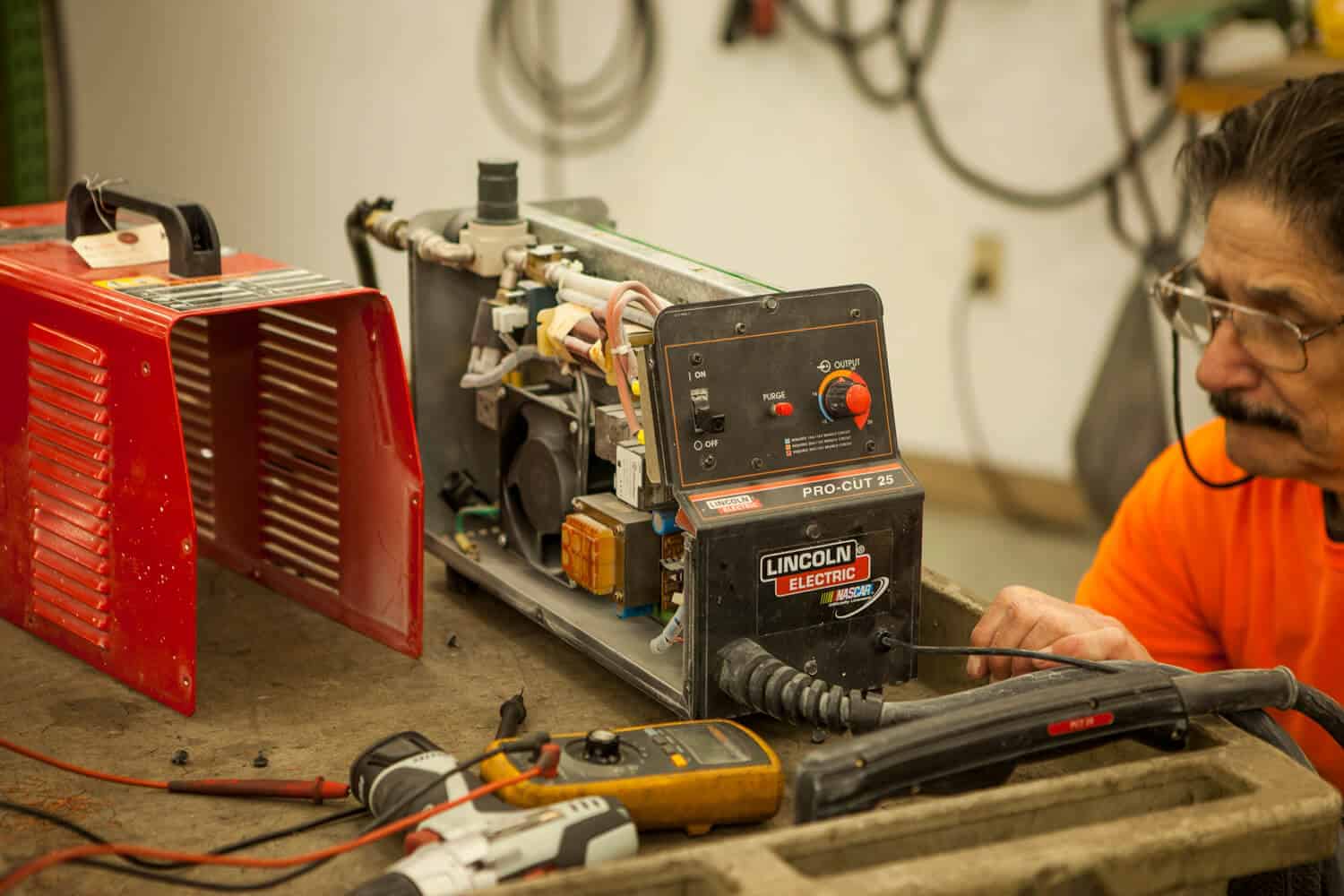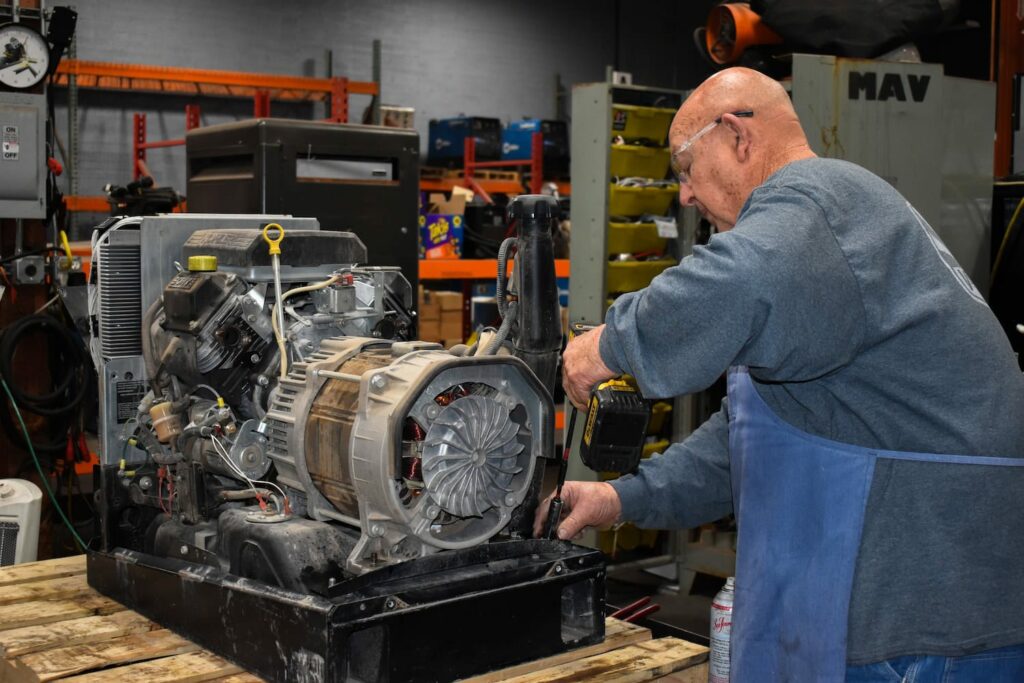Root reasons behind weld porosity and how Belgrade Welding addresses them
All Concerning Welding: Secret Insights Into Techniques and Ideal Practices for Success
Welding incorporates a range of strategies, each fit for certain products and applications. Recognizing these approaches, such as GMAW, SMAW, and TIG, is essential for achieving perfect results. The right equipment and security methods can not be ignored. As prep work and troubleshooting play crucial functions in the welding process, grasping these elements can considerably improve the quality of the last item. What are the key factors that assure a successful weld?
Understanding Various Welding Methods
Welding techniques include a variety of approaches, each fit to particular applications and materials. Among one of the most typical techniques are Gas Metal Arc Welding (GMAW), Shielded Steel Arc Welding (SMAW), and Tungsten Inert Gas Welding (TIG) GMAW, also recognized as MIG welding, is popular for its rate and adaptability, making it optimal for thin products. SMAW, or stick welding, is favored for its simpleness and effectiveness in outside environments, specifically with thicker metals. TIG welding uses precision and control, making it appropriate for intricate job and non-ferrous metals (Montana Mobile Welding and Repair Belgrade Welding). Each strategy has its distinct benefits and considerations, permitting welders to select the most effective technique based upon the project's needs, material type, and wanted outcomes. Understanding these methods is important for successful welding
Necessary Welding Equipment and Tools
While different welding strategies call for particular abilities, the best devices and devices are just as important for accomplishing high quality outcomes. Essential welding devices includes welding devices, which differ relying on the strategy-- such as MIG, TIG, or stick welding. Safety equipment, consisting of aprons, safety helmets, and handwear covers, warranties safety and security and comfort during the process. Furthermore, components and clamps aid safeguard products in area, ensuring accuracy in welds. Consumables like welding poles, cord, and securing gas are likewise essential parts that affect the top quality of the weld. In addition, devices such as cutters and grinders help with surface prep work and post-weld completing, contributing to a professional outcome. Purchasing high-quality devices inevitably improves the performance and effectiveness of welding projects.
Safety And Security Practices in Welding
Correct safety and security methods are vital in the welding market to safeguard workers from potential threats. Welders need to wear proper personal safety devices (PPE), consisting of safety helmets with proper shading, handwear covers, and flame-resistant clothing. Appropriate ventilation is essential to decrease exposure to dangerous fumes and gases generated throughout the welding process. Furthermore, employees ought to be educated in the appropriate handling of welding equipment to stop mishaps. Fire safety procedures, such as keeping flammable products away from the welding area and having fire extinguishers conveniently available, are essential. Routine inspections of devices and work areas can aid identify prospective threats prior to they result in mishaps. By sticking to these safety methods, welders can develop a safer working environment and reduce threats associated with their profession.
Readying Products for Welding
Preparing materials for welding is a crucial step that significantly affects the top quality and integrity of the end product (Montana Mobile Welding and Repair Welding). Correct preparation involves cleaning the surfaces to get rid of contaminants such as oil, dirt, and rust, which can jeopardize the weld. Methods such as grinding, fining sand, or making use of solvents are generally employed to attain a clean surface. In addition, making sure that the products mesh well is necessary; gaps can lead to weak welds. It's also crucial to take into account the positioning and positioning of the elements, as this will certainly impact the convenience of welding and the final outcome. Ultimately, selecting the appropriate filler product and ensuring compatibility with the base steels is vital for attaining strong, long lasting welds
Tips for Achieving High-Quality Welds
Attaining premium welds calls for attention to information and adherence to ideal techniques throughout the welding process. Appropriate joint prep work is crucial, guaranteeing surfaces are totally free and clean from contaminants. Selecting the suitable filler material and welding technique based on the base steels is crucial for optimal bonding. Maintaining constant travel rate and angle while welding can promote and stop flaws harmony. In addition, managing warm input is necessary; excessive warm can bring about bending and deteriorated joints. If essential, routinely inspecting the welds throughout the procedure enables for prompt changes. Lastly, employing proper post-weld treatments, such as cleaning and stress and anxiety alleviation, can enhance the sturdiness and stability of the weld, ultimately ensuring a successful result.
Repairing Typical Welding Issues
Welding often provides difficulties that can influence the high quality and stability of the end product. Usual concerns such as porosity, irregular weld beads, and getting too hot can develop, each needing particular fixing techniques. Comprehending these issues is crucial for welders to improve their abilities and attain ideal results.
Porosity Troubles Discussed
Although porosity can usually be neglected, it stays an important concern in welding that can endanger the integrity of a completed item. Porosity refers to the visibility of tiny gas pockets within the weld grain, which can compromise the joint and lead to early failure. This issue typically arises from pollutants, wetness, or improper securing gas coverage during the welding procedure. To mitigate porosity, welders should confirm that the base materials are completely dry and tidy, use ideal protecting gases, and preserve consistent welding criteria. Frequently inspecting find more info the tools and setting can also aid recognize prospective issues prior to they manifest in the weld. Resolving porosity properly is vital for accomplishing solid, sturdy welds that meet quality criteria.

Inconsistent Weld Beans
Irregular weld grains can significantly affect the top quality and stamina of an ended up item. Numerous factors add to this problem, consisting of improper travel rate, inaccurate amperage settings, and irregular electrode angles. When the welder relocates also swiftly, a grain may show up narrow and do not have infiltration, while relocating too slowly can cause too much buildup. Additionally, using the wrong amperage can result in either undercutting or extreme spatter, both of which concession weld stability. The welder's technique, such as inconsistent torch activity, can likewise bring about uneven bead appearance. To alleviate these troubles, welders ought to concentrate on keeping steady, controlled movements and making sure proper equipment settings to attain uniformity in their welds. Consistency is essential to achieving solid and trusted welds.
Overheating and Warping Issues
Too much heat during the welding process can lead to considerable overheating and contorting issues, affecting the structural integrity of the work surface. These troubles typically materialize as distortion, which can compromise positioning and fit-up, making additional setting up testing. Aspects adding to overheating include the selection of welding criteria, such as voltage and travel speed, as well as the sort of material being bonded. To reduce these problems, welders must maintain regular travel rate and suitable heat input while monitoring the work surface temperature. Furthermore, preheating or post-weld warm therapy can help relieve anxieties brought on by rapid air conditioning - Montana Mobile Welding and Repair Welding. Routine evaluation and adherence to ideal techniques are important in preventing getting too hot and making sure the durability and reliability of bonded frameworks
Frequently Asked Questions
What Are the Profession Opportunities in the Welding Market?
The welding sector offers varied job opportunities, consisting of settings as welders, instructors, designers, and examiners. Professionals can function in production, building and construction, aerospace, and vehicle industries, gaining from solid need and competitive wages in various duties.
Exactly How Can I Boost My Welding Rate Without Compromising Quality?
To enhance welding rate without giving up high quality, one must exercise reliable techniques, keep devices, maximize settings, and boost hand-eye sychronisation. Regular training and looking for feedback can also greatly contribute to attaining much faster, top notch welds.
What Accreditations Are Available for Welders?
Numerous qualifications exist for welders, consisting of those from the American Welding Culture (AWS), the National Center for Building And Construction Education And Learning and Research Study (NCCER), and various industry-specific organizations. These qualifications improve employability and show skill efficiency.
Exactly How Does Welding Influence the Residences of Metals?
Welding affects the properties of metals by changing their microstructure, which can lead to changes in strength, ductility, Source and solidity. Warm input and air conditioning prices throughout the process significantly influence these product characteristics.
Can I Weld Dissimilar Metals With Each Other?
